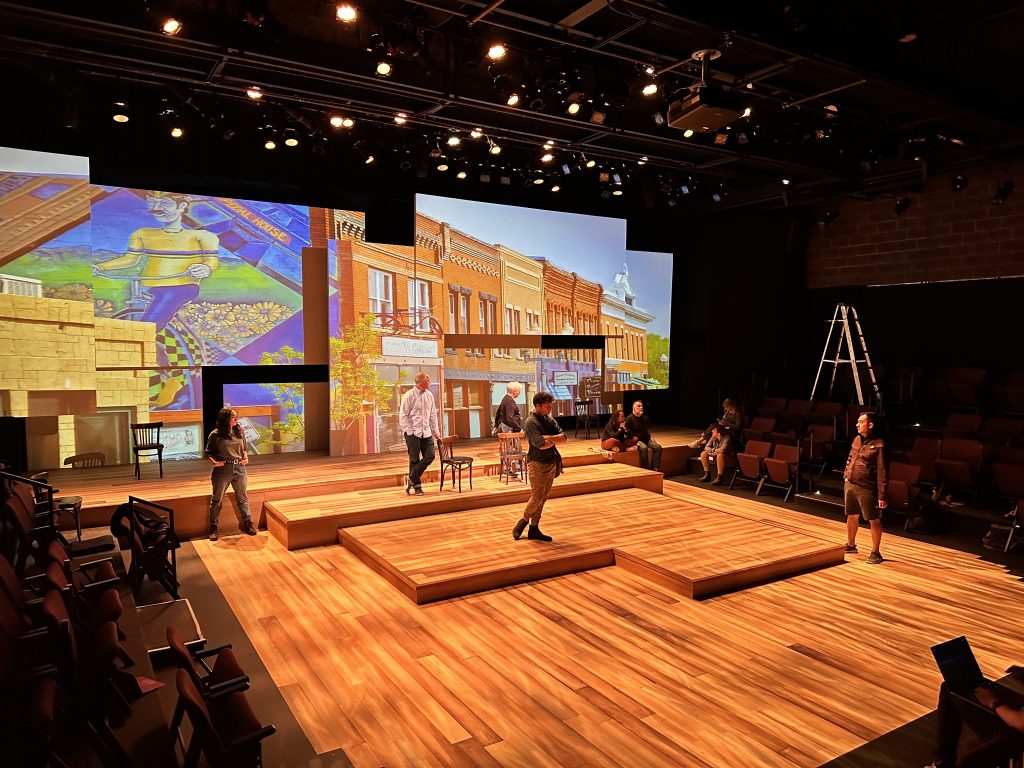
Certain events in American history leave an indelible imprint on our collective memory. Matthew Shepard’s tragic 1998 murder in Laramie, Wyoming — which forever changed the country’s perspective on hate crimes and discrimination — is one such event.
On that dark October day, Shepard, a 21-year-old University of Wyoming student, was brutally attacked, tied to a fence and left to die outside Laramie. This heinous act of cruelty catapulted the formerly sleepy town into the national spotlight.
Now, 25 years after Shepard’s death, the Arvada Center for the Arts and Humanities presents The Laramie Project, a powerful and moving documentary theater production. Based on interviews with members of the community conducted by Moisés Kaufman and members of the Tectonic Theater Project, this groundbreaking play offers a window into how a small town grappled with the aftermath of a brutal hate crime that reverberated far beyond its borders.
“We have made big strides in the queer community, but unfortunately, the hate is even stronger than almost ever,” says performer and co-director Rodney Lizcano. “Yes, we have gay marriage, but the ferocity and timbre of the opposition has grown exponentially as well. The Laramie Project enables us to keep having crucial, essential conversations about homophobia in order to continue to grow.”
Based on hundreds of dialogues with town residents, journal entries by members of the Tectonic Theater Project and media coverage of the incident, the play depicts the harrowing tale of a community rocked by the shocking murder. The Laramie Project was first workshopped 23 years ago for its world premiere at the Denver Center for the Performing Arts.
“When Tectonic was invited to workshop Laramie, I was in the DCPA’s [National Theatre Conservatory] MFA program and got to witness the play’s creation in rehearsals,” Lizcano says. “They literally had pages and pages of interviews that they would grab and read together to figure out which ones created a story.”
These interviews, drawn from a variety of sources — including members of the town’s queer community, Shepard’s family and friends and people who knew the perpetrators — provide a glimpse into the raw emotions and personal experiences of those directly affected by the tragedy.
“I’ve tried not to portray these real-life people as characters but to bear witness to the truth in what they’re saying,” says cast member Vin Ernst. “My attention has been on the truth that is written on the page; instead of allowing my own emotions to color the lines, I am trying to focus on the meaning of each word to express what the text actually communicates.”

Photo by Collin Sanders.
‘A community comes together to heal’
The Matthew Shepard Foundation, an LGBTQ nonprofit organization established by Dennis and Judy Shepard in memory of their son, maintains a close relationship with the theaters that present The Laramie Project. The nonprofit donates resources to support the production, in order to ensure the veracity of the story. Additionally, Andy Paris, a member of the original production’s Tectonic Theater Project, took part in a Zoom Q&A with the creative team.
“We were extremely fortunate to meet with Andy because it allowed our actors to ask questions to someone who conducted the interviews they are performing onstage,” says co-director Kate Gleason. “It was refreshing and honest to hear he did not have all the answers while still being able to speak to each character’s humanity.”
In addition to its gripping narrative, The Laramie Project is known for its innovative use of technology to enhance the storytelling. The original production featured a half-dozen television screens with footage of the actors in Laramie. Lizcano says the Arvada Center will be staging the play in a “thrust configuration,” with the audience surrounding the performers on three sides, and using projections to make it feel as immersive as possible.
“Because we have so much of that footage available to us, we thought we would take a cue from what Tectonic has done with its media-forward production and just turn up the volume a little,” Lizcano says. “The Laramie Project has never been done before at the Center, so it is exciting to share and explore with the organization … We also work with a fantastic costume designer who is from Laramie. Because Nicole Watts knew these people personally, it will be very special to see that specificity in the production’s costuming.”
As the play unfolds on the Arvada Center stage, it offers a poignant opportunity to reflect on Shepard’s legacy and what it means for the struggle for LGBTQ rights today. The Laramie Project is more than just a historical account; it serves as a catalyst for change in the present and a glimmer of hope for a brighter tomorrow.
“I grew up in a very insular, conservative Christian environment, and I’ve been thinking about how impactful it would have been for me to see a story like this at that point in my life when I felt so isolated,” Ernst says. “Although this story was created out of a tragedy, that’s not really what the story is about. It is about how a community comes together to heal. There is hate, but there are also people who are willing to stand against it, so while The Laramie Project doesn’t shy away from hatred, it also doesn’t linger on it.”
ON STAGE: The Laramie Project. Sept. 29–Nov. 7, Arvada Center, 6901 Wadsworth Blvd. Tickets here.














